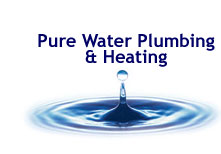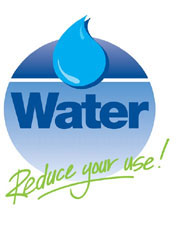Did you know that you can profit in 2 ways from deploying water saving products in existing legacy washrooms?
1 . Reduce water bills by up to 60%
In commercial premises around 25% of 'domestic' water is used when operating taps. A tap can often deliver a flow rate of up to 20 litres/min depending on pressure. There are several water saving devices available to businesses to reduce water use substantially.
Efficient Taps
A tap flow rate of 5-6 litres per minute is adequate for hand washing purposes1, but many taps greatly exceed this flow, wasting water and money unnecessarily. Taps left running and dripping can result in major water loss and high cost, particularly if they are wasting heated water.
Several devices exist to overcome these problems and make fast water savings. The simple methods are often the most effective. Isolating ball valves, flow restrictors, spray taps or tap aerators could reduce flow by 10 litres per min and would incur very small capital costs.
Simple retrofitted tap installations can result in easy savings – for example, a tap aerator at a cost of £5 per tap could make annual water and effluent savings of £13 per tap.
The Water Technology List includes the following sub-technologies for efficient taps:
- Automatic shut off taps
- Electronic taps
- Low flow screw-down/lever taps
- Spray taps
Efficient Toilets
In commercial premises, toilet flushing makes a significant contribution to overall water usage and as such, it is an ideal target for implementation of water saving devices. Cisterns can often be over sized, using more water than necessary per flush – generally only 6 litres is sufficient for flushing. A reduction in cistern volume, achieved by installing low flush toilets or retrofitting volume-reducing devices, can make a large difference to water bills.
Efficient Showers
Making showers more efficient is one of the easiest ways to reduce water usage and to save money. For example, on a shower used twice a day for five minutes, the fitting of a shower aerator to the showerhead, at a cost of around £5, could save around £30/year in water and sewage costs [1] . Payback periods are typically short and installation can often be quick and easy.
The simplest technologies are often the most effective. These include isolating ball valve, shower aerator and aerating showerhead installations. Any of these devices could reduce shower flow rates by up to 6 litres per minute and all can be retrofitted to existing pipe-work. The isolating ball valve functions as an isolation valve that allows flow to be adjusted. A shower aerator allows air to mix with water between the hose and the showerhead – resulting in lower water usage, but with apparent high flow maintained. The aerating showerhead works to similar effect, reducing water use without reducing the user experience.
Other technologies that are available include:
- Thermostatic Mixer Valve (TMV) – the thermostat element to the valve controls and maintains a constant water temperature, thus water is saved in the initial draw off.
- Auto shut off showers
- Point of source heater – water is saved at the initial draw off as desired temperature is met immediately
The Water Technology List includes the following sub-technologies for efficient showers:
- Aerated showerheads
- Auto shut off showers
- Flow regulators
- Low flow showerheads
- Thermostatic controlled showers
Any organisation can make fast savings by making toilets and urinals more efficient. The average company with 100 male staff could make savings of £3,800 per year through urinal controls that prevent continual flushing throughout the day and out-of-hours.
Technologies available on the Water Technology List include low flush toilets, retrofit WC flushing devices and urinal controls (such as passive sensors).
2. Enhanced Capital Allowances (ECA) -Tax relief on upgrading wash rooms
Tax incentives will encourage businesses to invest in water saving technologies.
The Enhanced Capital Allowance Scheme (ECA ) enables businesses to claim 100% first year capital allowances on investments in technologies and products that encourage sustainable water use. Businesses are now able to write off the whole cost of their investment against their taxable profits of the period during which they make the investment.





